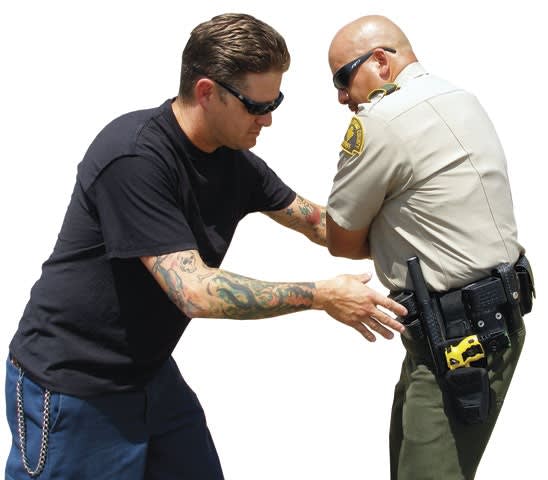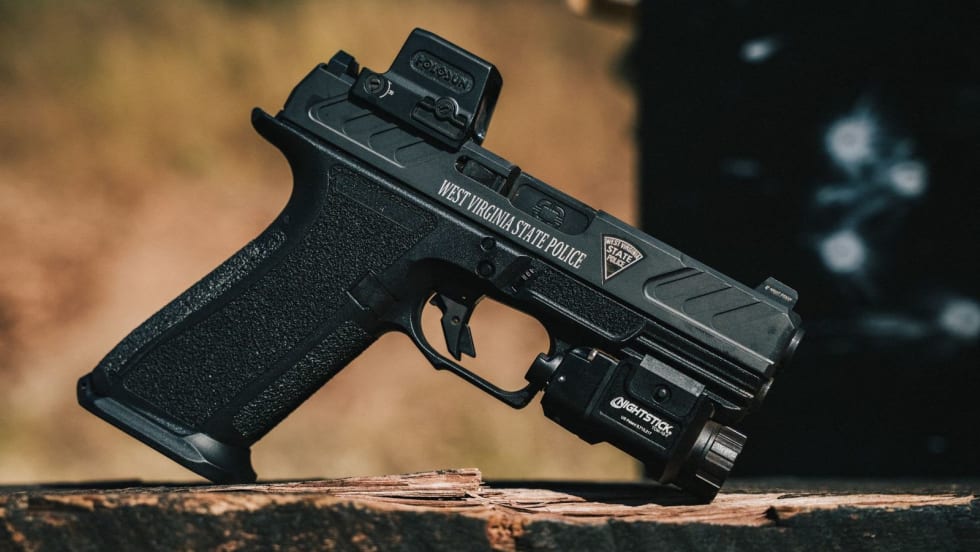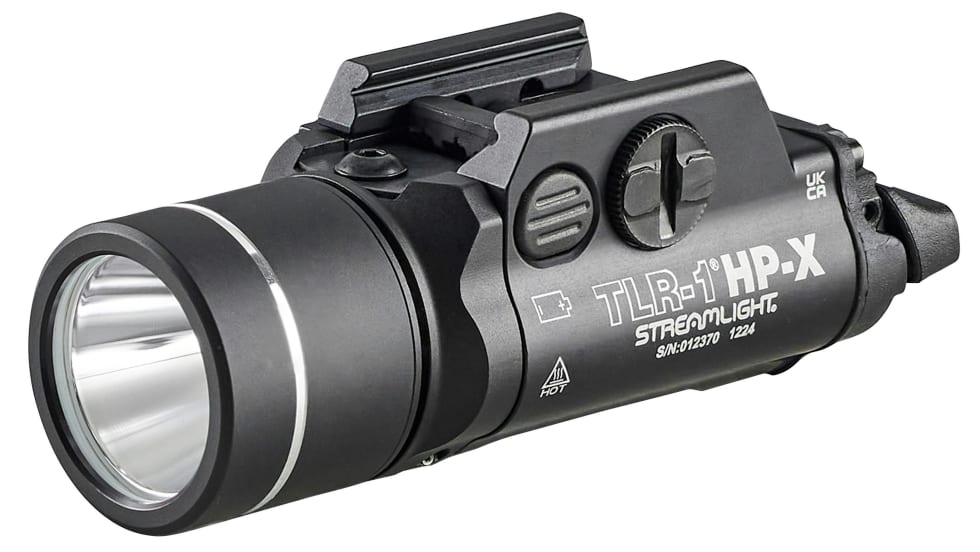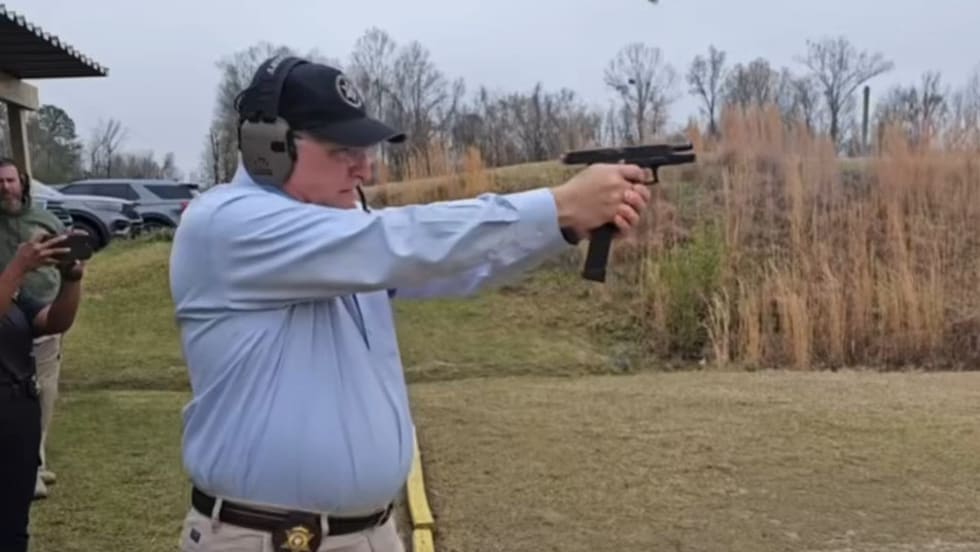The second concept I advocate is gaining a position of control I call "weapons safe" if you are unable to push the suspect away. When you are in the weapons safe position you can defend your firearm and your TASER.
Rather than using both hands to defend your firearm from a takeaway, the weapons safe position focuses on the suspect's arms. To perform the technique, put one arm under the suspect's armpit and then grab the back of your own neck. Many defensive tactics systems refer to this as "under hooking" the suspect's arm. This keeps one of the suspect's arms away from your duty belt.
With your other arm, place your palm on the suspect's bicep, keeping the suspect's other arm away from your waistline. This position keeps both of the suspect's hands away from your duty belt, protecting all of your weapons systems. One of the advantages of this position is that it gives you a path to escape and a set up for a TASER application to the suspect's back. All you have to do is push the suspect away while you lift up the elbow you have under hooked on the suspect. This will set up a TASER application to the suspect's back.
One very important point to remember is that the weapons safe position should only be used when you cannot push the suspect away using your hands, feet, elbows, head, or anything else at your disposal.
The tactics I have outlined offer logical solutions to the dilemma of defending your TASER and your firearm. It should be noted that the techniques shown in this article are just a small part of an integrated system of weapon retention and arrest techniques specifically developed to defend and more efficiently use the TASER. It is my hope that agencies will recognize the need to create new techniques and tactics to increase officer safety regarding TASER weapon retention.










